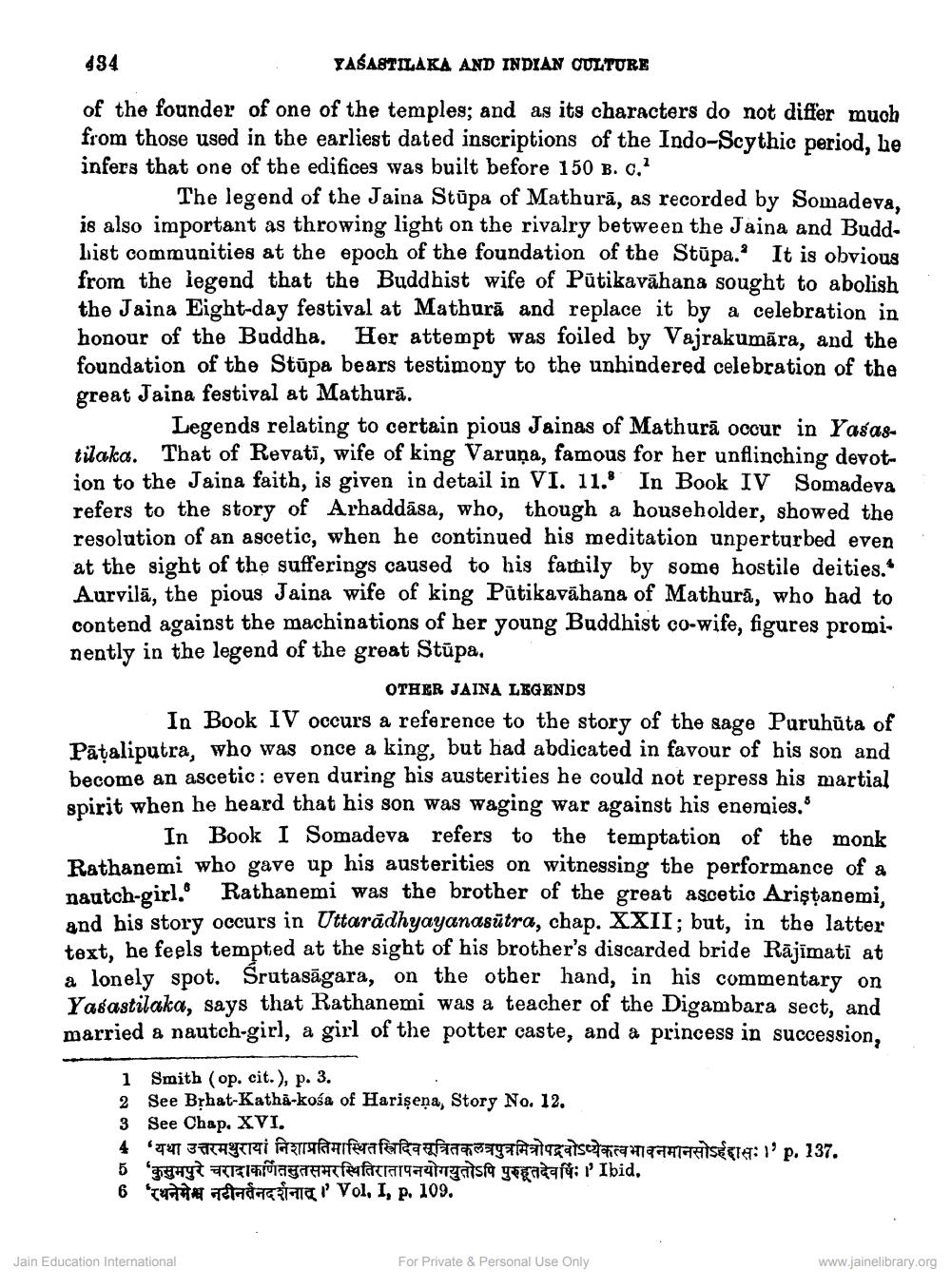________________
494
YASASTILAKA AND INDIAN CULTURE
of the founder of one of the temples; and as its characters do not differ much from those used in the earliest dated inscriptions of the Indo-Scythic period, he infers that one of the edifices was built before 150 B. c.1
The legend of the Jaina Stupa of Mathura, as recorded by Somadeva, is also important as throwing light on the rivalry between the Jaina and Buddhist communities at the epoch of the foundation of the Stupa. It is obvious from the legend that the Buddhist wife of Pūtikavahana sought to abolish the Jaina Eight-day festival at Mathura and replace it by a celebration in honour of the Buddha. Her attempt was foiled by Vajrakumāra, and the foundation of the Stupa bears testimony to the unhindered celebration of the great Jaina festival at Mathura.
Legends relating to certain pious Jainas of Mathura occur in Yasastilaka. That of Revati, wife of king Varuna, famous for her unflinching devotion to the Jaina faith, is given in detail in VI. 11. In Book IV Somadeva refers to the story of Arhaddasa, who, though a householder, showed the resolution of an ascetic, when he continued his meditation unperturbed even at the sight of the sufferings caused to his family by some hostile deities.* Aurvila, the pious Jaina wife of king Pūtikavahana of Mathura, who had to contend against the machinations of her young Buddhist co-wife, figures prominently in the legend of the great Stupa.
OTHER JAINA LEGENDS
In Book IV occurs a reference to the story of the sage Puruhūta of Pataliputra, who was once a king, but had abdicated in favour of his son and become an ascetic: even during his austerities he could not repress his martial spirit when he heard that his son was waging war against his enemies.*
In Book I Somadeva refers to the temptation of the monk Rathanemi who gave up his austerities on witnessing the performance of a nautch-girl. Rathanemi was the brother of the great ascetic Aristanemi, and his story occurs in Uttaradhyayanasutra, chap. XXII; but, in the latter text, he feels tempted at the sight of his brother's discarded bride Rājīmati at a lonely spot. Śrutasagara, on the other hand, in his commentary on Yasastilaka, says that Rathanemi was a teacher of the Digambara sect, and married a nautch-girl, a girl of the potter caste, and a princess in succession,
1
Smith (op. cit.), p. 3.
2 See Bṛhat-Katha-kośa of Harişena, Story No. 12.
3
See Chap. XVI.
4 ' यथा उत्तरमथुरायां निशाप्रतिमास्थित स्त्रिदिव सूत्रितकलत्रपुत्रमित्रोपद्रवोऽप्येकत्व भावनमानसोऽर्हदासः 12 p. 137.
5 'कुसुमपुरे चरादाकर्णितसुतसमर स्थितिरातापनयोगयुतोऽपि पुरुहूतदेवर्षिः । Ibid.
6 'रथनेमेव नटीनर्तनदर्शनात् ।' Vol, I, p. 109.
Jain Education International
For Private & Personal Use Only
www.jainelibrary.org




